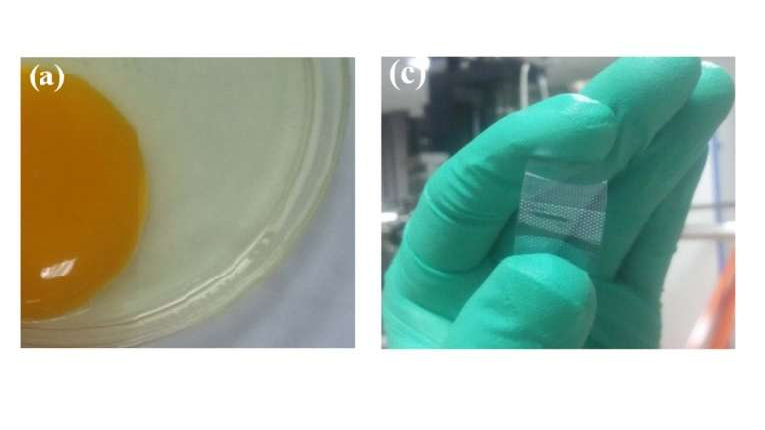El-egg-tronics: how egg white could help us make transparent, flexible devices
This is no yolk

I have some eggcellent news. Materials scientists have found that egg white can be turned into a film-like substance that's perfect for making memory units.
Researchers from Southwest University in China, led by Qunliang Song, showed that when egg white is mixed with hydrogen peroxide, a series of chemical reactions occur that allow the material to be turned into a film that can be used to make transparent, flexible resistive memory.
Here's how it works. Egg white contains more than 40 different proteins, containing iron, sodium and potassium ions, linked together with weak chemical bonds. When you mix it with bleach, the bonds are broken and the ions are exposed.
Those ions, which are positively charged, can then capture negatively charged electrons that are injected when a voltage level is applied. When there are few electrons around, the material behaves as an insulator, but when there are lots the material becomes conducting. To reset it, you can then apply a positive voltage - releasing the electrons.
Switching endurance
It's not the first time that egg white has been used to make electronics. Transistors and other devices have been fabricated from chicken and duck eggs. But this is the first time it's been used to make memory. In testing, it showed a high on/off resistance ratio, and good retention and switching endurance even after repeated bending.
"As a promising alternative to the conventional silicon-based nonvolatile memory, the egg albumen has more advantages than other materials," Song told Phys.org.
"The bio-organic material egg albumen may have potential applications in the imitation of biological memory behavior, artificial intelligence, and brain-like intelligence because of the good compatibility."
Sign up for breaking news, reviews, opinion, top tech deals, and more.
He added: "We will continue our investigation of the mechanism of resistive switching memory. At the same time, flexible, wearable and water-dissolution resistive switching memory cells will be developed using organic-modified egg albumen in our following work."
The team published the details of their work in the journal Nanotechnology.
